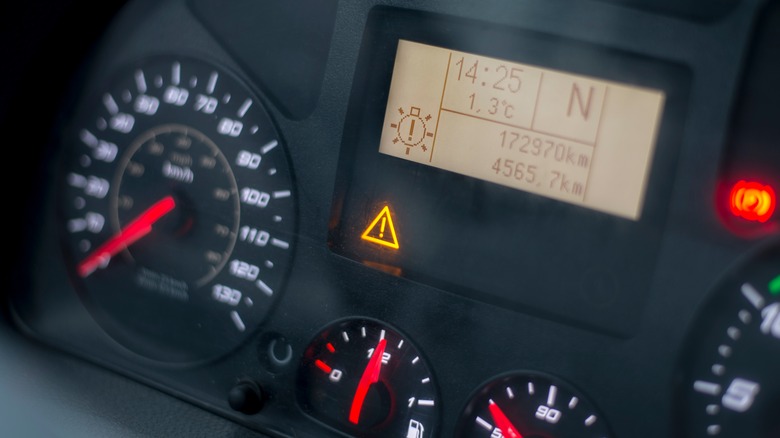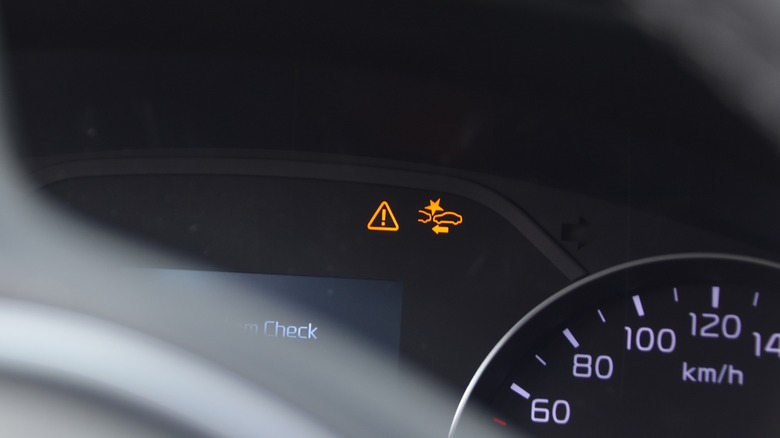VSA Light On Honda Accord: What It Means & Why It Won't Turn Off
Modern automotive technology has brought advanced systems that improve safety and driving dynamics. The year 2024 saw the introduction of technology such as artificial intelligence and machine learning, which improve driver assistance systems, predictive maintenance, and in-vehicle experiences, as well as tech like AR heads-up displays that provide information in the driver's line of sight. While headlines often focus on electric and self-driving cars, several safety features remain equally noteworthy in other cars, both old and new. Among these features is Honda's Vehicle Stability Assist (VSA) system.
The VSA system is a key component that improves traction control and stability. It was first introduced to the Honda Accord lineup with the seventh-generation V6 model in 2006, even though the first time the tech entered the U.S. market was in 2000 on the Acura RL sedan. Over the years, this technology has become a standard feature across the Accord lineup, along with other models like the CR-V, Civic, and Pilot. The VSA leverages advanced sensors and algorithms to monitor vehicle dynamics in real-time and make adjustments accordingly — all while notifying the driver with the VSA light. But sometimes, drivers may come across a situation where the VSA light stays on and may become puzzled. What is the VSA light, and what does it mean if it remains on?
What is the VSA Light and what does it mean?
The Vehicle Stability Assist (VSA) light — represented by a traditional triangle icon with an exclamation mark — on your Honda Accord indicates your vehicle's stability control system. This system is designed to improve driving safety by maintaining optimal traction and control. It particularly comes in handy when encountering challenging driving conditions, like uneven surfaces, slippery roads, or sharp turns. When the VSA light turns on, it means the system has detected a potential loss of traction and is, during that time, actively intervening to stabilize the vehicle.
Behind the scenes — before the light turns on — the VSA system continuously monitors various parameters, such as wheel speed, lateral G-force, and steering angle. This way, it assesses the car's dynamic behavior in real time. But it's important to keep an eye on the light's behavior, as this could inform you if the system is working or if there's an issue.
Under normal circumstances, the VSA light briefly appears upon startup and quickly disappears after a few seconds. This means the VSA system is functioning normally. When the VSA light stays on and starts blinking, it means the system is actively working to correct the vehicle's stability. But, since it uses real-time data collected by various sensors, its stability corrections are based on the particular situation at hand. For instance, during aggressive cornering on a wet road, the VSA may apply selective brake force to specific wheels and adjust the engine power to prevent skidding. However, if the VSA light remains on rather than blinking, it could be one or more underlying issues that require attention.
Why the VSA light may stay on permanently
If the VSA light on your Honda Accord remains steadily illuminated and doesn't turn off automatically, it could indicate that the system has been turned off using the VSA override button, which is located under the steering wheel. Oftentimes, drivers may accidentally hit the override button and deactivate the system, causing the VSA light to stay on until it is re-enabled. Issues with tire sizes can also trigger the VSA light. As mentioned, one of the parameters measured by the VSA system depends on the wheel speed data, and this is based on uniform wheels. So, using mismatched or undersized tires, such as a temporary spare, can confuse the system.
Damaged wheel speed sensors or their damaged wiring also cause the VSA light to turn on. Like the ABS, VSA depends on sensors to pull the right data and make the right corrections. Any malfunction of these sensors can cause the system to shut down, automatically triggering the dreaded light. Similarly, Honda uses soy-based wiring insulation. While eco-friendly, this wiring can attract rodents, which can chew wires that disrupt the system. A blown fuse on the VSA circuit panel can also cause the light to turn on.
In some cases, the sustained VSA light may be related to the engine or emission systems. The Accord, like many of the brand's cars, comes with the Variable Cylinder Management (VCM) system, which uses the Variable Valve-Timing and Lift Electronic Control (or VTEC) to deactivate some cylinders when the vehicle isn't running at full power. Though it's efficient, it can lead to spark plug fouling, leading to engine misfires that disable the VSA. In other rare cases, the VSA light issue may stem from a VSA modulator failure, which was actually the result of a recent 2022 Civic recall. This is a complex component that requires professional diagnostics and repair. If the VSA light remains on after checking all these issues, you should have a qualified technician restore or replace the system.


